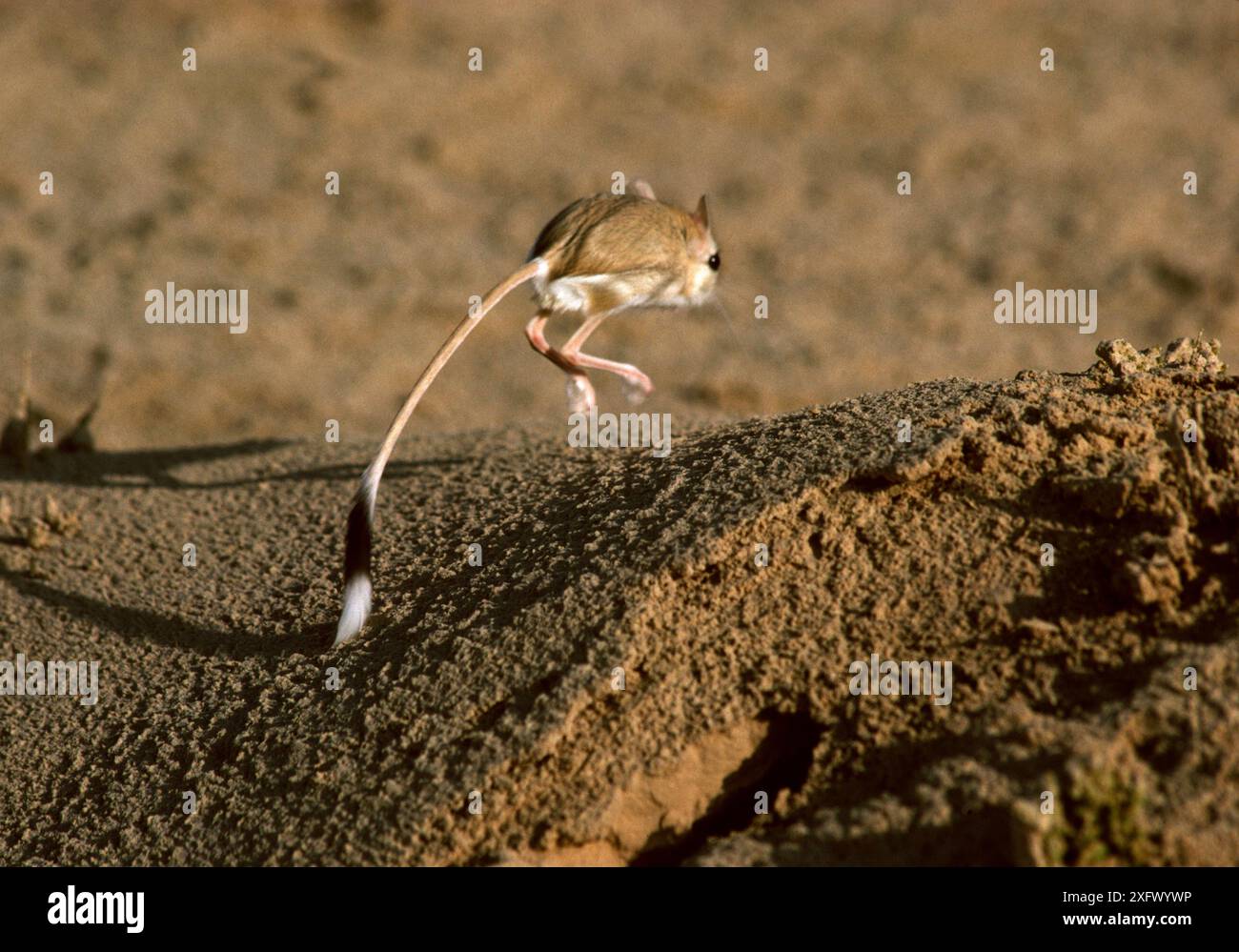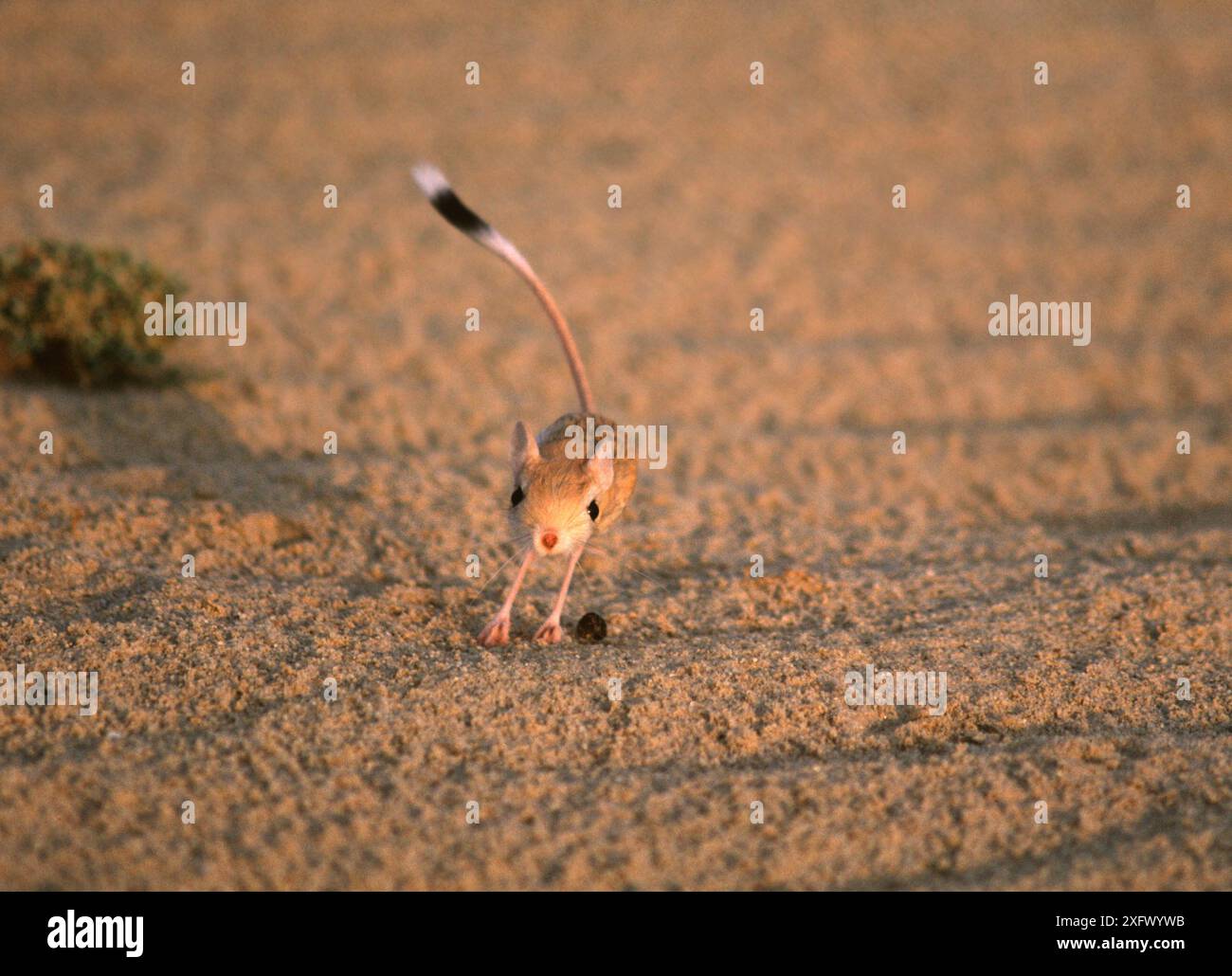Quick filters:
Desert jerboas Stock Photos and Images
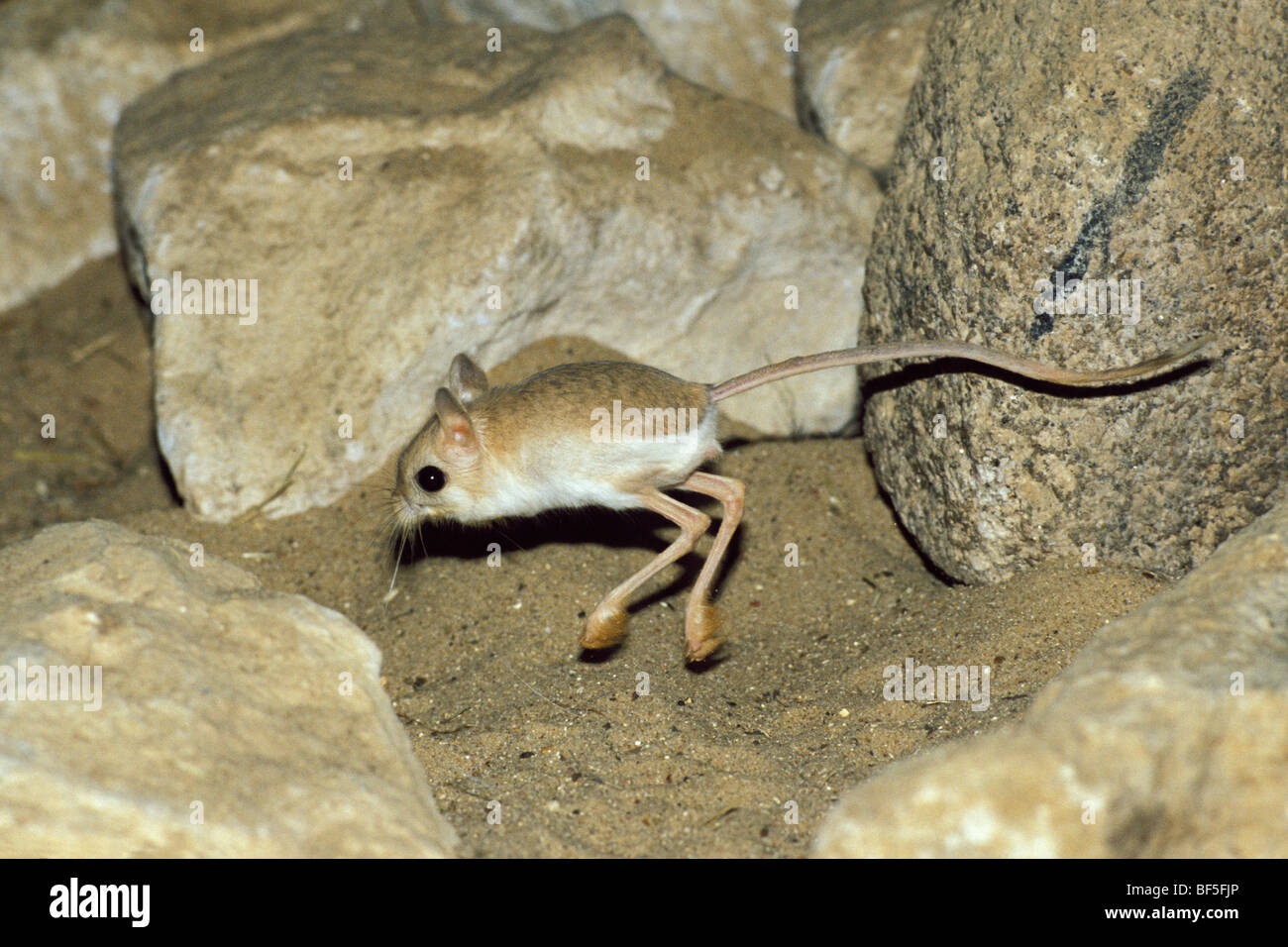 Desert Jerboa (Jaculus jaculus), running, hopping, Africa Stock Photohttps://www.alamy.com/image-license-details/?v=1https://www.alamy.com/stock-photo-desert-jerboa-jaculus-jaculus-running-hopping-africa-26552254.html
Desert Jerboa (Jaculus jaculus), running, hopping, Africa Stock Photohttps://www.alamy.com/image-license-details/?v=1https://www.alamy.com/stock-photo-desert-jerboa-jaculus-jaculus-running-hopping-africa-26552254.htmlRFBF5FJP–Desert Jerboa (Jaculus jaculus), running, hopping, Africa
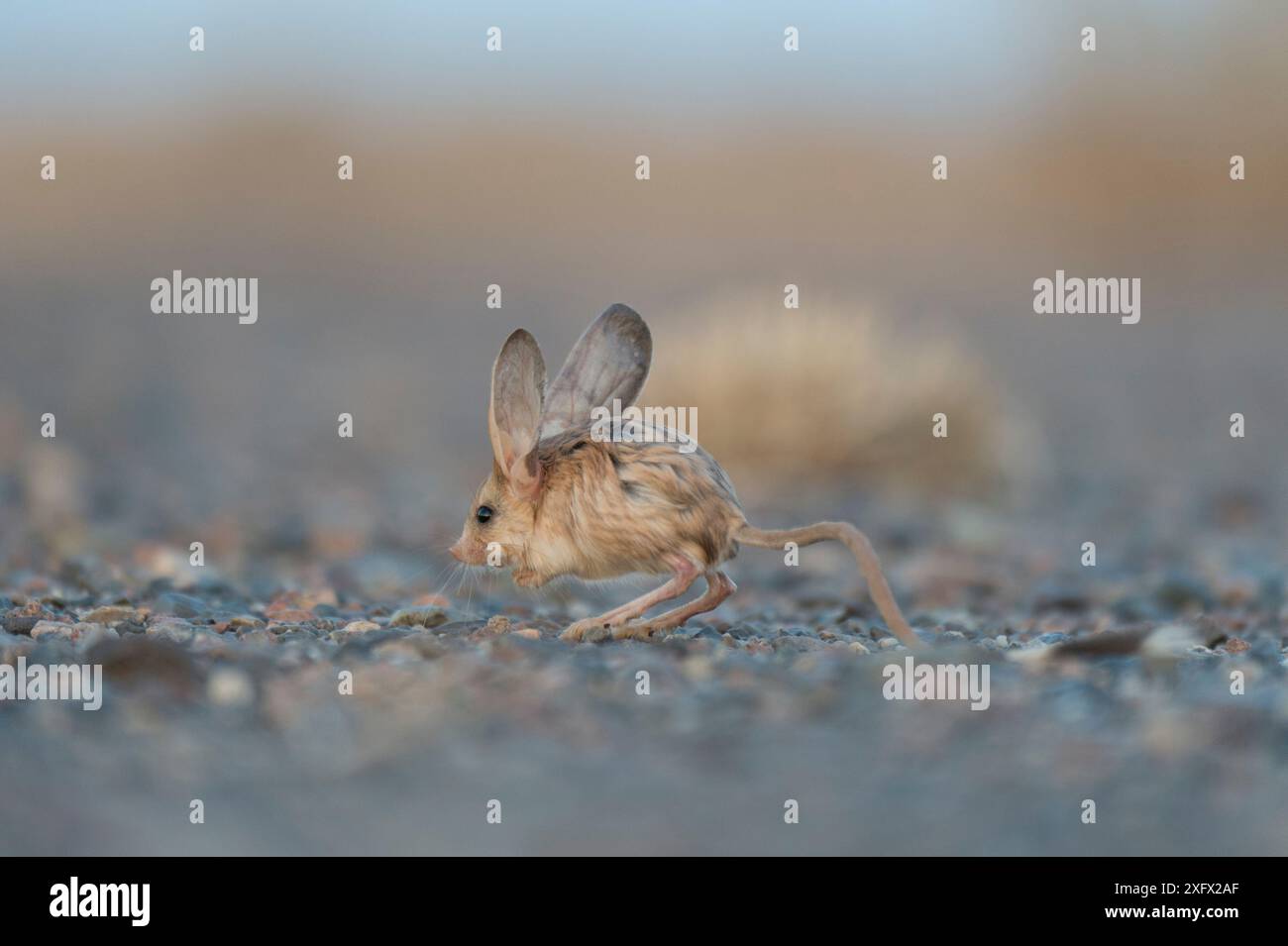 Long-eared jerboa (Euchorentes naso) South Gobi Desert, Mongolia. June. Stock Photohttps://www.alamy.com/image-license-details/?v=1https://www.alamy.com/long-eared-jerboa-euchorentes-naso-south-gobi-desert-mongolia-june-image612155335.html
Long-eared jerboa (Euchorentes naso) South Gobi Desert, Mongolia. June. Stock Photohttps://www.alamy.com/image-license-details/?v=1https://www.alamy.com/long-eared-jerboa-euchorentes-naso-south-gobi-desert-mongolia-june-image612155335.htmlRM2XFX2AF–Long-eared jerboa (Euchorentes naso) South Gobi Desert, Mongolia. June.
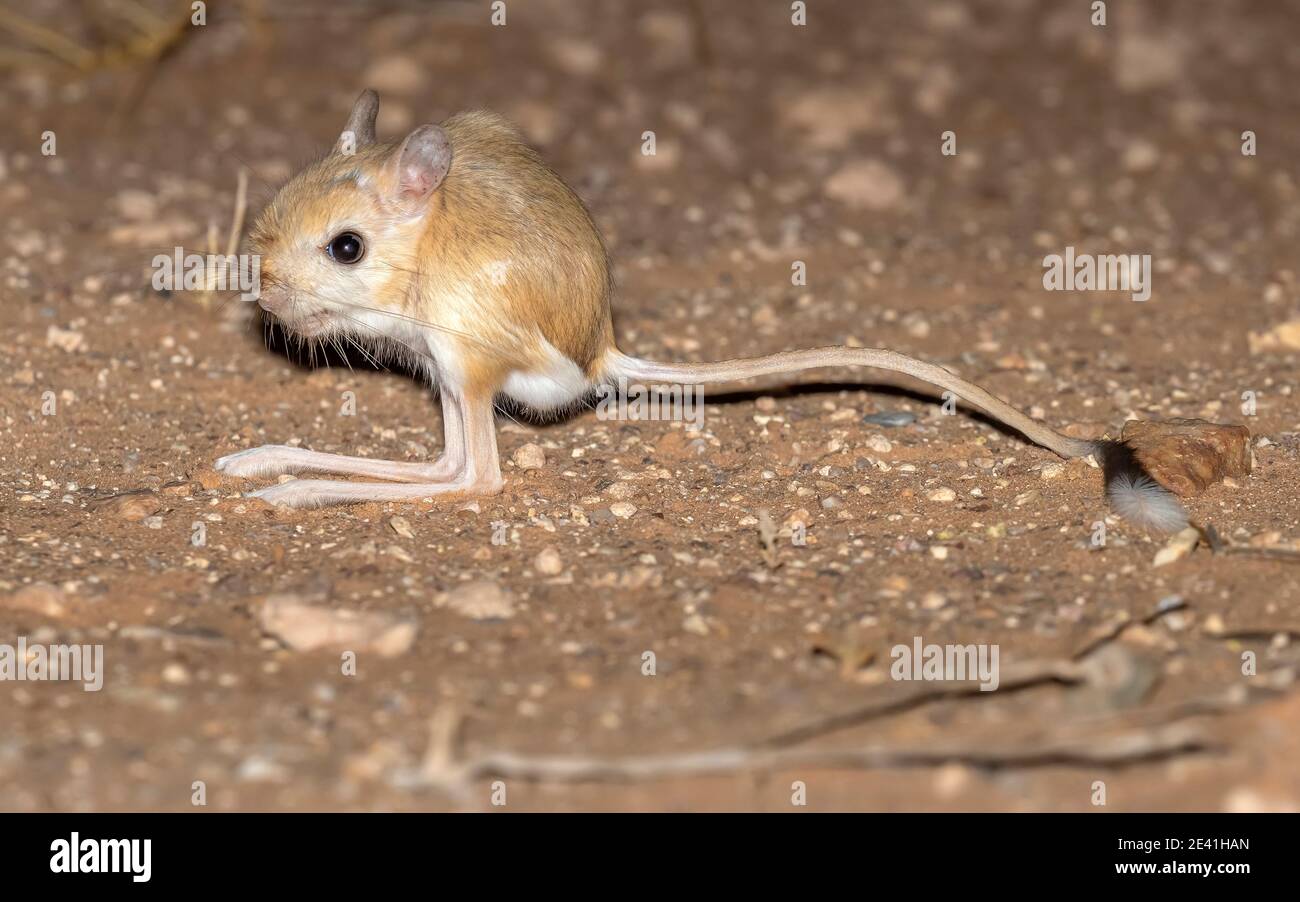 Greater Egyptian jerboa (Jaculus orientalis), on sandy ground, side view, Morocco, Western Sahara, Oued Ed-Dahab, Aousserd Stock Photohttps://www.alamy.com/image-license-details/?v=1https://www.alamy.com/greater-egyptian-jerboa-jaculus-orientalis-on-sandy-ground-side-view-morocco-western-sahara-oued-ed-dahab-aousserd-image398332669.html
Greater Egyptian jerboa (Jaculus orientalis), on sandy ground, side view, Morocco, Western Sahara, Oued Ed-Dahab, Aousserd Stock Photohttps://www.alamy.com/image-license-details/?v=1https://www.alamy.com/greater-egyptian-jerboa-jaculus-orientalis-on-sandy-ground-side-view-morocco-western-sahara-oued-ed-dahab-aousserd-image398332669.htmlRM2E41HAN–Greater Egyptian jerboa (Jaculus orientalis), on sandy ground, side view, Morocco, Western Sahara, Oued Ed-Dahab, Aousserd
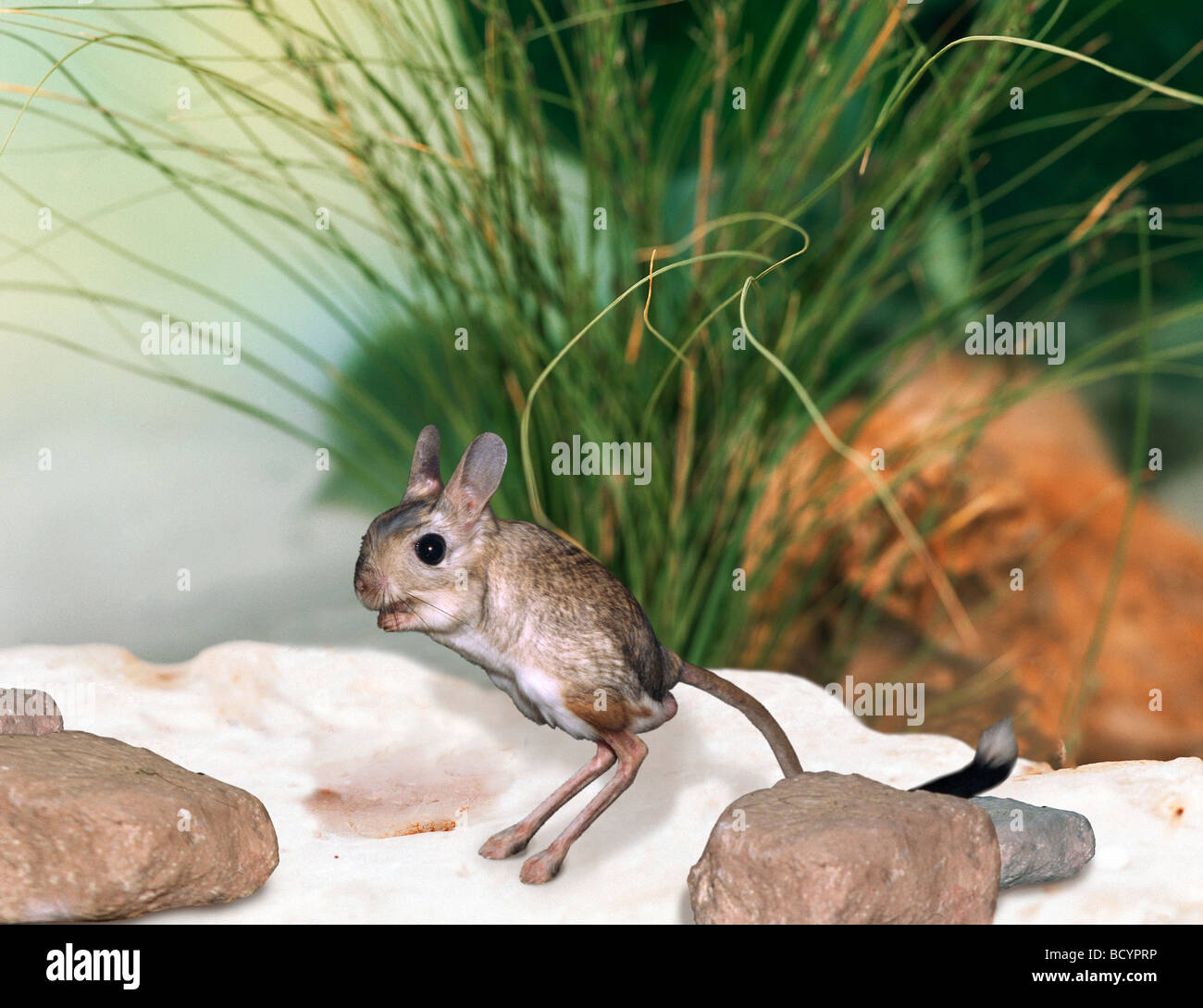 Desert Jerboa (Jaculus sp) on sand. Stock Photohttps://www.alamy.com/image-license-details/?v=1https://www.alamy.com/stock-photo-desert-jerboa-jaculus-sp-on-sand-25196858.html
Desert Jerboa (Jaculus sp) on sand. Stock Photohttps://www.alamy.com/image-license-details/?v=1https://www.alamy.com/stock-photo-desert-jerboa-jaculus-sp-on-sand-25196858.htmlRMBCYPRP–Desert Jerboa (Jaculus sp) on sand.
 A desert landscape with large cacti, jerboas and an armadillo. Colour line block. Stock Photohttps://www.alamy.com/image-license-details/?v=1https://www.alamy.com/a-desert-landscape-with-large-cacti-jerboas-and-an-armadillo-colour-line-block-image450079918.html
A desert landscape with large cacti, jerboas and an armadillo. Colour line block. Stock Photohttps://www.alamy.com/image-license-details/?v=1https://www.alamy.com/a-desert-landscape-with-large-cacti-jerboas-and-an-armadillo-colour-line-block-image450079918.htmlRM2H46WEP–A desert landscape with large cacti, jerboas and an armadillo. Colour line block.
 . Animal Life and the World of Nature; A magazine of Natural History. EGYPTIAN JERBOA. Uncommon Pets 199. BAT KANGAHOO. cage may be of half-inch mesh galvanisedwire netting; but bird-cage wire has a neaterappearance and gives a better view of theinmates, and by some is to be preferred onthat account. The floor of the cage mustbe covered with an inch or two of sand,as the natural habitats of jerboas are thearid and desert districts where, so exactlydoes the colour of their fur harmonise withtheir surroundings, that they are seldomnoticed, although very numerous. They aregregarious animals, and, Stock Photohttps://www.alamy.com/image-license-details/?v=1https://www.alamy.com/animal-life-and-the-world-of-nature-a-magazine-of-natural-history-egyptian-jerboa-uncommon-pets-199-bat-kangahoo-cage-may-be-of-half-inch-mesh-galvanisedwire-netting-but-bird-cage-wire-has-a-neaterappearance-and-gives-a-better-view-of-theinmates-and-by-some-is-to-be-preferred-onthat-account-the-floor-of-the-cage-mustbe-covered-with-an-inch-or-two-of-sandas-the-natural-habitats-of-jerboas-are-thearid-and-desert-districts-where-so-exactlydoes-the-colour-of-their-fur-harmonise-withtheir-surroundings-that-they-are-seldomnoticed-although-very-numerous-they-aregregarious-animals-and-image370644128.html
. Animal Life and the World of Nature; A magazine of Natural History. EGYPTIAN JERBOA. Uncommon Pets 199. BAT KANGAHOO. cage may be of half-inch mesh galvanisedwire netting; but bird-cage wire has a neaterappearance and gives a better view of theinmates, and by some is to be preferred onthat account. The floor of the cage mustbe covered with an inch or two of sand,as the natural habitats of jerboas are thearid and desert districts where, so exactlydoes the colour of their fur harmonise withtheir surroundings, that they are seldomnoticed, although very numerous. They aregregarious animals, and, Stock Photohttps://www.alamy.com/image-license-details/?v=1https://www.alamy.com/animal-life-and-the-world-of-nature-a-magazine-of-natural-history-egyptian-jerboa-uncommon-pets-199-bat-kangahoo-cage-may-be-of-half-inch-mesh-galvanisedwire-netting-but-bird-cage-wire-has-a-neaterappearance-and-gives-a-better-view-of-theinmates-and-by-some-is-to-be-preferred-onthat-account-the-floor-of-the-cage-mustbe-covered-with-an-inch-or-two-of-sandas-the-natural-habitats-of-jerboas-are-thearid-and-desert-districts-where-so-exactlydoes-the-colour-of-their-fur-harmonise-withtheir-surroundings-that-they-are-seldomnoticed-although-very-numerous-they-aregregarious-animals-and-image370644128.htmlRM2CF08A8–. Animal Life and the World of Nature; A magazine of Natural History. EGYPTIAN JERBOA. Uncommon Pets 199. BAT KANGAHOO. cage may be of half-inch mesh galvanisedwire netting; but bird-cage wire has a neaterappearance and gives a better view of theinmates, and by some is to be preferred onthat account. The floor of the cage mustbe covered with an inch or two of sand,as the natural habitats of jerboas are thearid and desert districts where, so exactlydoes the colour of their fur harmonise withtheir surroundings, that they are seldomnoticed, although very numerous. They aregregarious animals, and,
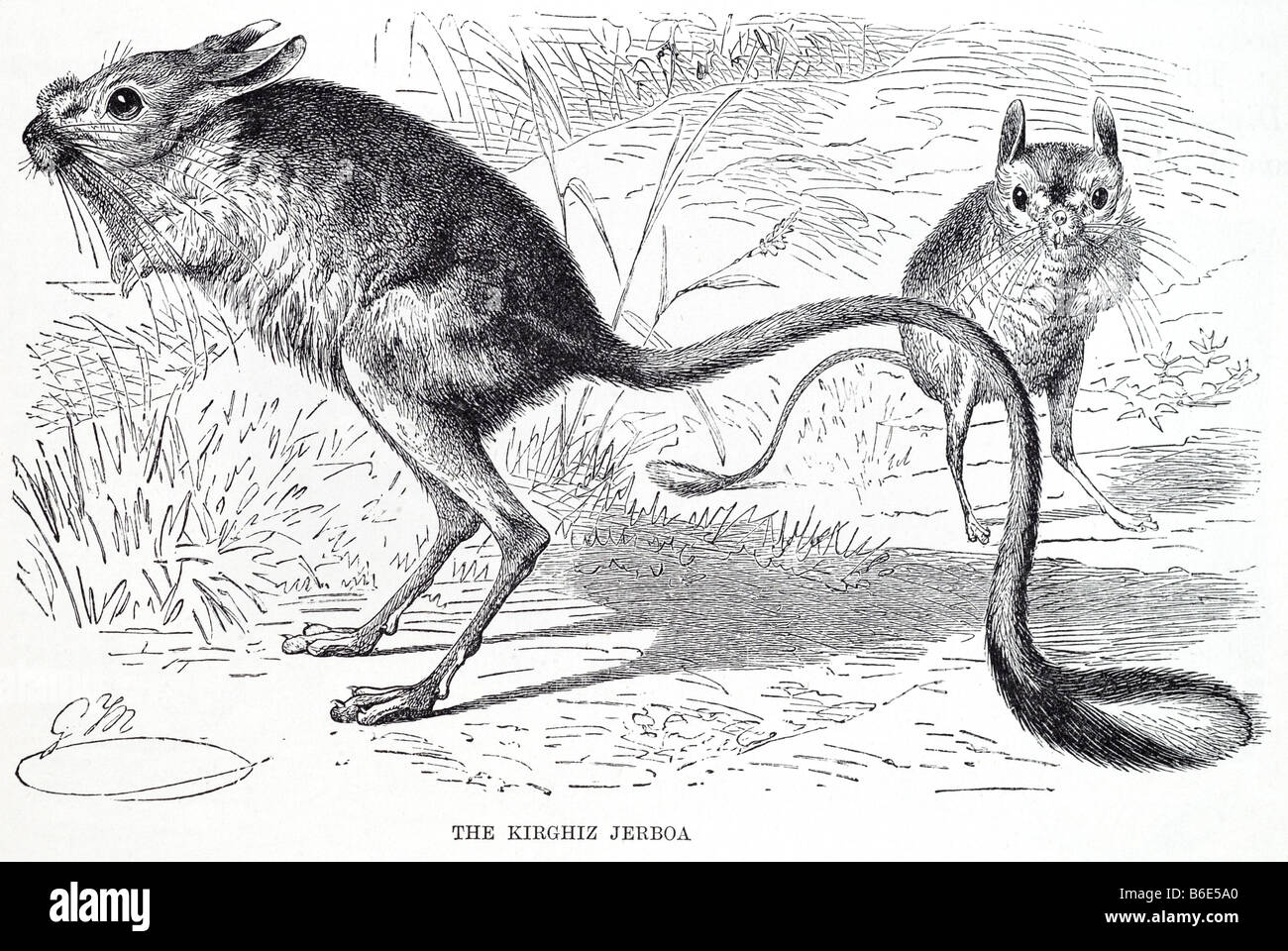 kirghiz jerboa Arabic يربوع Yarbū' or Hebrew יַרְבּוֹעַ yarboa Dipodidae Jerboas are small jumping desert rodents found througho Stock Photohttps://www.alamy.com/image-license-details/?v=1https://www.alamy.com/stock-photo-kirghiz-jerboa-arabic-yarb-or-hebrew-yarboa-dipodidae-jerboas-are-21209832.html
kirghiz jerboa Arabic يربوع Yarbū' or Hebrew יַרְבּוֹעַ yarboa Dipodidae Jerboas are small jumping desert rodents found througho Stock Photohttps://www.alamy.com/image-license-details/?v=1https://www.alamy.com/stock-photo-kirghiz-jerboa-arabic-yarb-or-hebrew-yarboa-dipodidae-jerboas-are-21209832.htmlRFB6E5A0–kirghiz jerboa Arabic يربوع Yarbū' or Hebrew יַרְבּוֹעַ yarboa Dipodidae Jerboas are small jumping desert rodents found througho
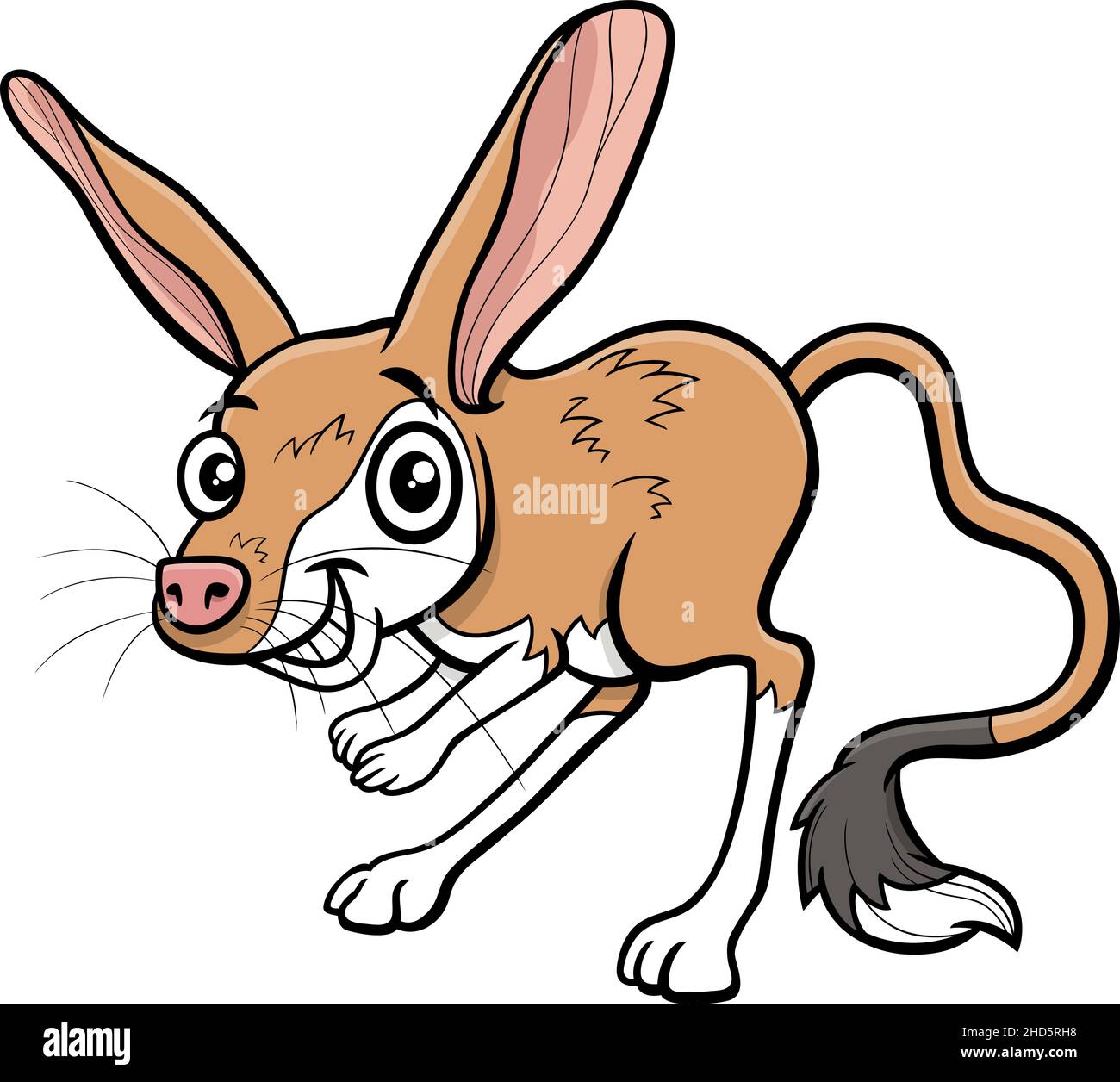 Cartoon illustration of funny jerboa comic animal character Stock Vectorhttps://www.alamy.com/image-license-details/?v=1https://www.alamy.com/cartoon-illustration-of-funny-jerboa-comic-animal-character-image455588372.html
Cartoon illustration of funny jerboa comic animal character Stock Vectorhttps://www.alamy.com/image-license-details/?v=1https://www.alamy.com/cartoon-illustration-of-funny-jerboa-comic-animal-character-image455588372.htmlRF2HD5RH8–Cartoon illustration of funny jerboa comic animal character
 Collection of rodents silhouettes. Vector illustration. Stock Vectorhttps://www.alamy.com/image-license-details/?v=1https://www.alamy.com/collection-of-rodents-silhouettes-vector-illustration-image65014947.html
Collection of rodents silhouettes. Vector illustration. Stock Vectorhttps://www.alamy.com/image-license-details/?v=1https://www.alamy.com/collection-of-rodents-silhouettes-vector-illustration-image65014947.htmlRFDNNK6B–Collection of rodents silhouettes. Vector illustration.
 Collection of rodents silhouettes. Vector illustration. Stock Photohttps://www.alamy.com/image-license-details/?v=1https://www.alamy.com/stock-photo-collection-of-rodents-silhouettes-vector-illustration-37197115.html
Collection of rodents silhouettes. Vector illustration. Stock Photohttps://www.alamy.com/image-license-details/?v=1https://www.alamy.com/stock-photo-collection-of-rodents-silhouettes-vector-illustration-37197115.htmlRFC4ED8B–Collection of rodents silhouettes. Vector illustration.
 Long-eared jerboa (Euchorentes naso) South Gobi Desert, Mongolia. June. Stock Photohttps://www.alamy.com/image-license-details/?v=1https://www.alamy.com/long-eared-jerboa-euchorentes-naso-south-gobi-desert-mongolia-june-image612155299.html
Long-eared jerboa (Euchorentes naso) South Gobi Desert, Mongolia. June. Stock Photohttps://www.alamy.com/image-license-details/?v=1https://www.alamy.com/long-eared-jerboa-euchorentes-naso-south-gobi-desert-mongolia-june-image612155299.htmlRM2XFX297–Long-eared jerboa (Euchorentes naso) South Gobi Desert, Mongolia. June.
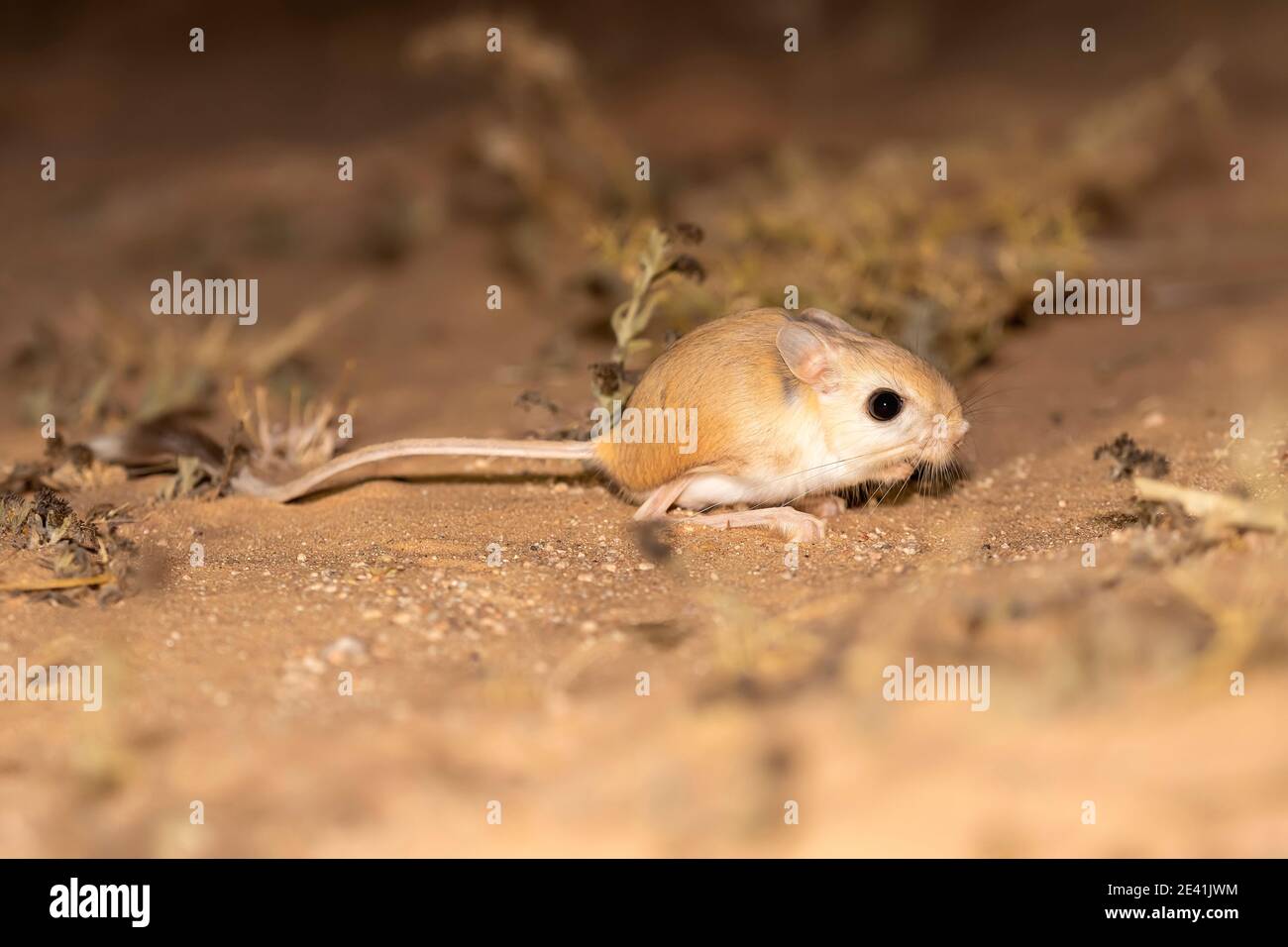 Greater Egyptian jerboa (Jaculus orientalis), on sandy ground, side view, Morocco, Western Sahara, Oued Ed-Dahab, Aousserd Stock Photohttps://www.alamy.com/image-license-details/?v=1https://www.alamy.com/greater-egyptian-jerboa-jaculus-orientalis-on-sandy-ground-side-view-morocco-western-sahara-oued-ed-dahab-aousserd-image398333872.html
Greater Egyptian jerboa (Jaculus orientalis), on sandy ground, side view, Morocco, Western Sahara, Oued Ed-Dahab, Aousserd Stock Photohttps://www.alamy.com/image-license-details/?v=1https://www.alamy.com/greater-egyptian-jerboa-jaculus-orientalis-on-sandy-ground-side-view-morocco-western-sahara-oued-ed-dahab-aousserd-image398333872.htmlRM2E41JWM–Greater Egyptian jerboa (Jaculus orientalis), on sandy ground, side view, Morocco, Western Sahara, Oued Ed-Dahab, Aousserd
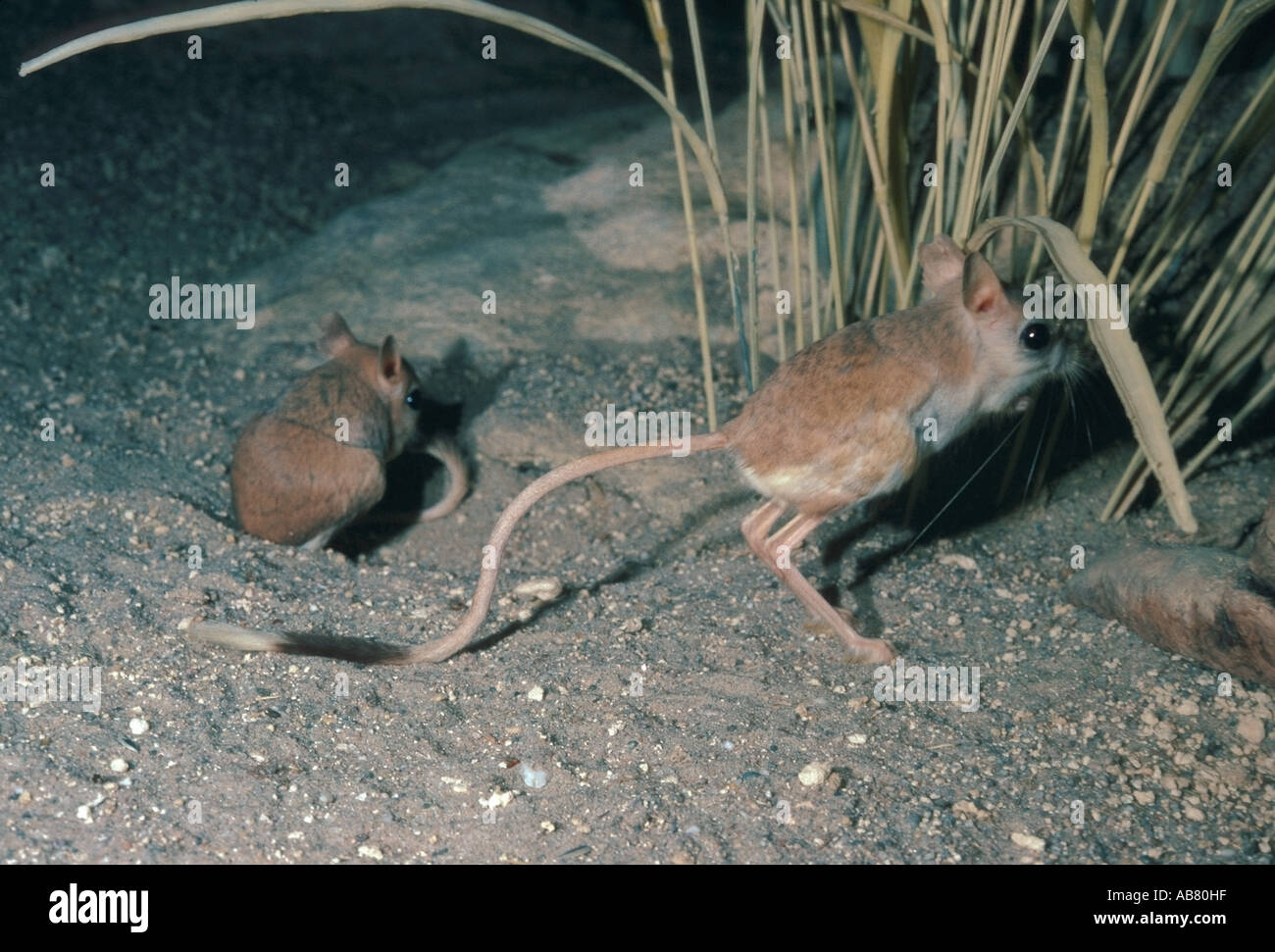 lesser Egyptian jerboa, desert jerboa (Jaculus jaculus), two individuals, one jumping Stock Photohttps://www.alamy.com/image-license-details/?v=1https://www.alamy.com/lesser-egyptian-jerboa-desert-jerboa-jaculus-jaculus-two-individuals-image7318558.html
lesser Egyptian jerboa, desert jerboa (Jaculus jaculus), two individuals, one jumping Stock Photohttps://www.alamy.com/image-license-details/?v=1https://www.alamy.com/lesser-egyptian-jerboa-desert-jerboa-jaculus-jaculus-two-individuals-image7318558.htmlRMAB80HF–lesser Egyptian jerboa, desert jerboa (Jaculus jaculus), two individuals, one jumping
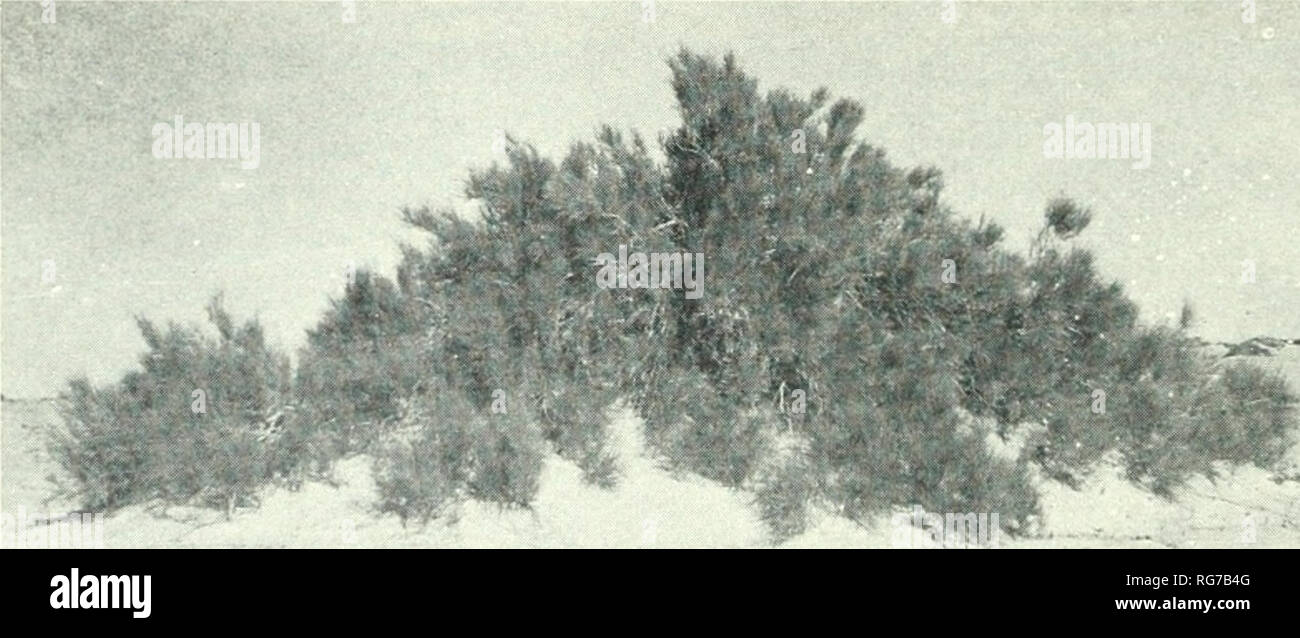 . Bulletin - United States National Museum. Science. Rock-strewn plain of the Gebel Nefusa, 12 kilometers south of Chicla, Tripolitania. The fat-tailed sand rat (Pachyuromys duprasi) prefers these areas where the surface is covered with coarse pebbles and the vegetative cover is sparse and localized, May 1962.. Large mound with dense cover of Calligonum near the oasis of Tazerbo, Cyrenaica. These outlying hummocks of the Saharan oases provide shelter and sustenance for several species of desert rodents, especially for jerboas (Jaculus jaculus) and gerbils (Gerbillus gerbillus), April 1962.. Pl Stock Photohttps://www.alamy.com/image-license-details/?v=1https://www.alamy.com/bulletin-united-states-national-museum-science-rock-strewn-plain-of-the-gebel-nefusa-12-kilometers-south-of-chicla-tripolitania-the-fat-tailed-sand-rat-pachyuromys-duprasi-prefers-these-areas-where-the-surface-is-covered-with-coarse-pebbles-and-the-vegetative-cover-is-sparse-and-localized-may-1962-large-mound-with-dense-cover-of-calligonum-near-the-oasis-of-tazerbo-cyrenaica-these-outlying-hummocks-of-the-saharan-oases-provide-shelter-and-sustenance-for-several-species-of-desert-rodents-especially-for-jerboas-jaculus-jaculus-and-gerbils-gerbillus-gerbillus-april-1962-pl-image233731696.html
. Bulletin - United States National Museum. Science. Rock-strewn plain of the Gebel Nefusa, 12 kilometers south of Chicla, Tripolitania. The fat-tailed sand rat (Pachyuromys duprasi) prefers these areas where the surface is covered with coarse pebbles and the vegetative cover is sparse and localized, May 1962.. Large mound with dense cover of Calligonum near the oasis of Tazerbo, Cyrenaica. These outlying hummocks of the Saharan oases provide shelter and sustenance for several species of desert rodents, especially for jerboas (Jaculus jaculus) and gerbils (Gerbillus gerbillus), April 1962.. Pl Stock Photohttps://www.alamy.com/image-license-details/?v=1https://www.alamy.com/bulletin-united-states-national-museum-science-rock-strewn-plain-of-the-gebel-nefusa-12-kilometers-south-of-chicla-tripolitania-the-fat-tailed-sand-rat-pachyuromys-duprasi-prefers-these-areas-where-the-surface-is-covered-with-coarse-pebbles-and-the-vegetative-cover-is-sparse-and-localized-may-1962-large-mound-with-dense-cover-of-calligonum-near-the-oasis-of-tazerbo-cyrenaica-these-outlying-hummocks-of-the-saharan-oases-provide-shelter-and-sustenance-for-several-species-of-desert-rodents-especially-for-jerboas-jaculus-jaculus-and-gerbils-gerbillus-gerbillus-april-1962-pl-image233731696.htmlRMRG7B4G–. Bulletin - United States National Museum. Science. Rock-strewn plain of the Gebel Nefusa, 12 kilometers south of Chicla, Tripolitania. The fat-tailed sand rat (Pachyuromys duprasi) prefers these areas where the surface is covered with coarse pebbles and the vegetative cover is sparse and localized, May 1962.. Large mound with dense cover of Calligonum near the oasis of Tazerbo, Cyrenaica. These outlying hummocks of the Saharan oases provide shelter and sustenance for several species of desert rodents, especially for jerboas (Jaculus jaculus) and gerbils (Gerbillus gerbillus), April 1962.. Pl
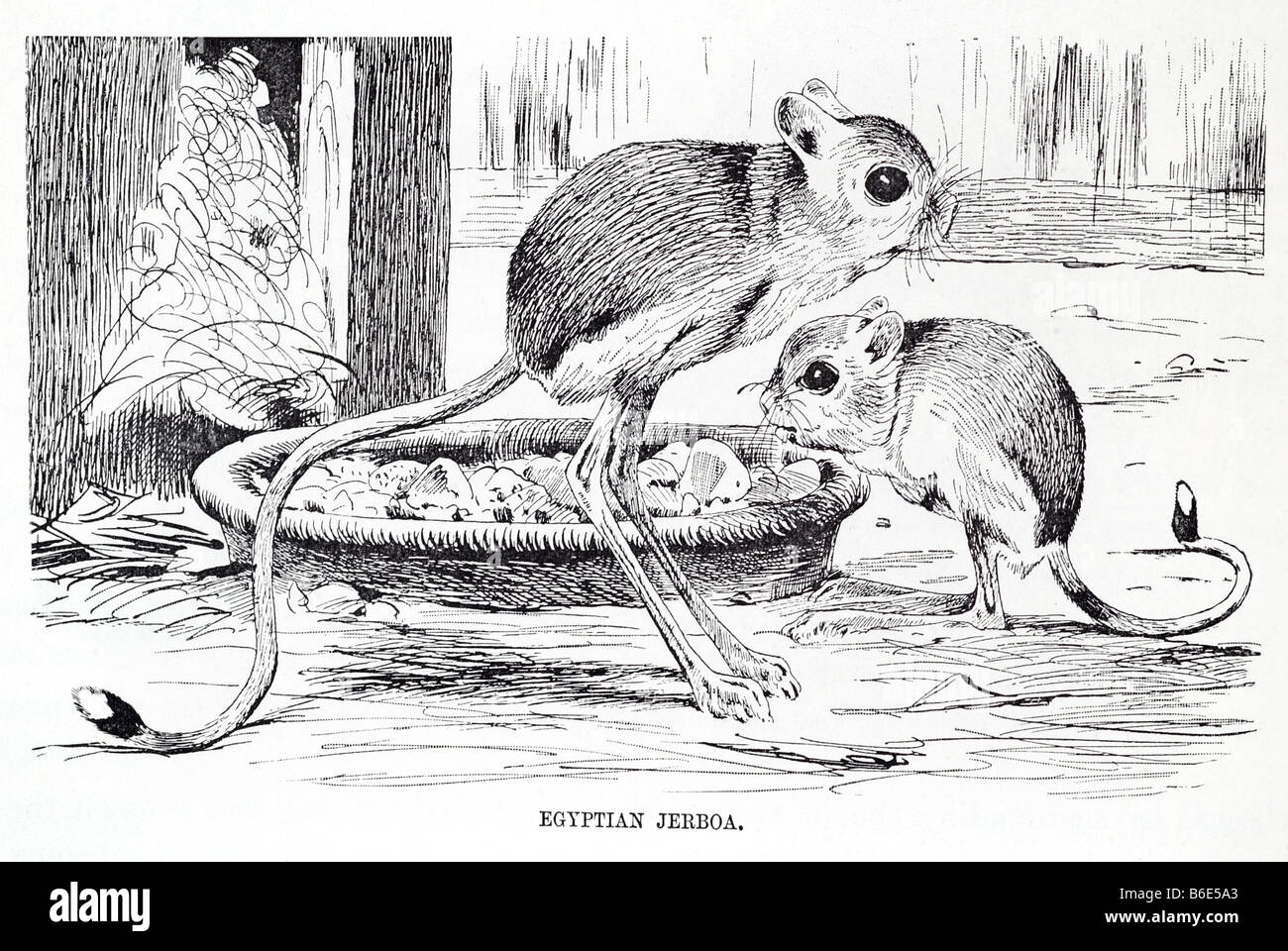 egyptian jerboa Arabic يربوع Yarbū' or Hebrew יַרְבּוֹעַ yarboaDipodidae Stock Photohttps://www.alamy.com/image-license-details/?v=1https://www.alamy.com/stock-photo-egyptian-jerboa-arabic-yarb-or-hebrew-yarboadipodidae-21209835.html
egyptian jerboa Arabic يربوع Yarbū' or Hebrew יַרְבּוֹעַ yarboaDipodidae Stock Photohttps://www.alamy.com/image-license-details/?v=1https://www.alamy.com/stock-photo-egyptian-jerboa-arabic-yarb-or-hebrew-yarboadipodidae-21209835.htmlRMB6E5A3–egyptian jerboa Arabic يربوع Yarbū' or Hebrew יַרְבּוֹעַ yarboaDipodidae
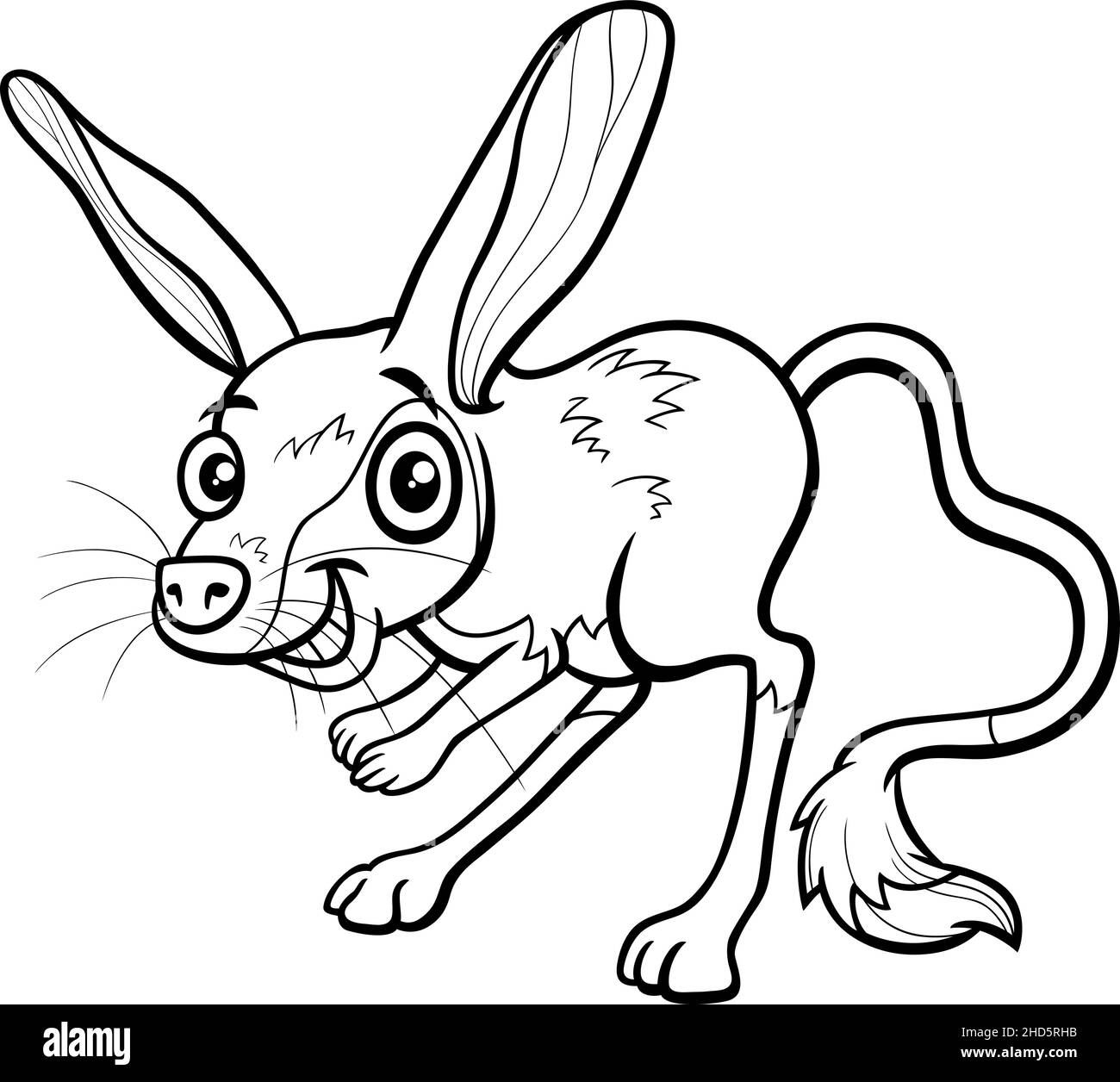 Black and white cartoon illustration of funny jerboa comic animal character coloring book page Stock Vectorhttps://www.alamy.com/image-license-details/?v=1https://www.alamy.com/black-and-white-cartoon-illustration-of-funny-jerboa-comic-animal-character-coloring-book-page-image455588375.html
Black and white cartoon illustration of funny jerboa comic animal character coloring book page Stock Vectorhttps://www.alamy.com/image-license-details/?v=1https://www.alamy.com/black-and-white-cartoon-illustration-of-funny-jerboa-comic-animal-character-coloring-book-page-image455588375.htmlRF2HD5RHB–Black and white cartoon illustration of funny jerboa comic animal character coloring book page
 Long-eared jerboa (Euchorentes naso) South Gobi Desert, Mongolia. June. Stock Photohttps://www.alamy.com/image-license-details/?v=1https://www.alamy.com/long-eared-jerboa-euchorentes-naso-south-gobi-desert-mongolia-june-image612155303.html
Long-eared jerboa (Euchorentes naso) South Gobi Desert, Mongolia. June. Stock Photohttps://www.alamy.com/image-license-details/?v=1https://www.alamy.com/long-eared-jerboa-euchorentes-naso-south-gobi-desert-mongolia-june-image612155303.htmlRM2XFX29B–Long-eared jerboa (Euchorentes naso) South Gobi Desert, Mongolia. June.
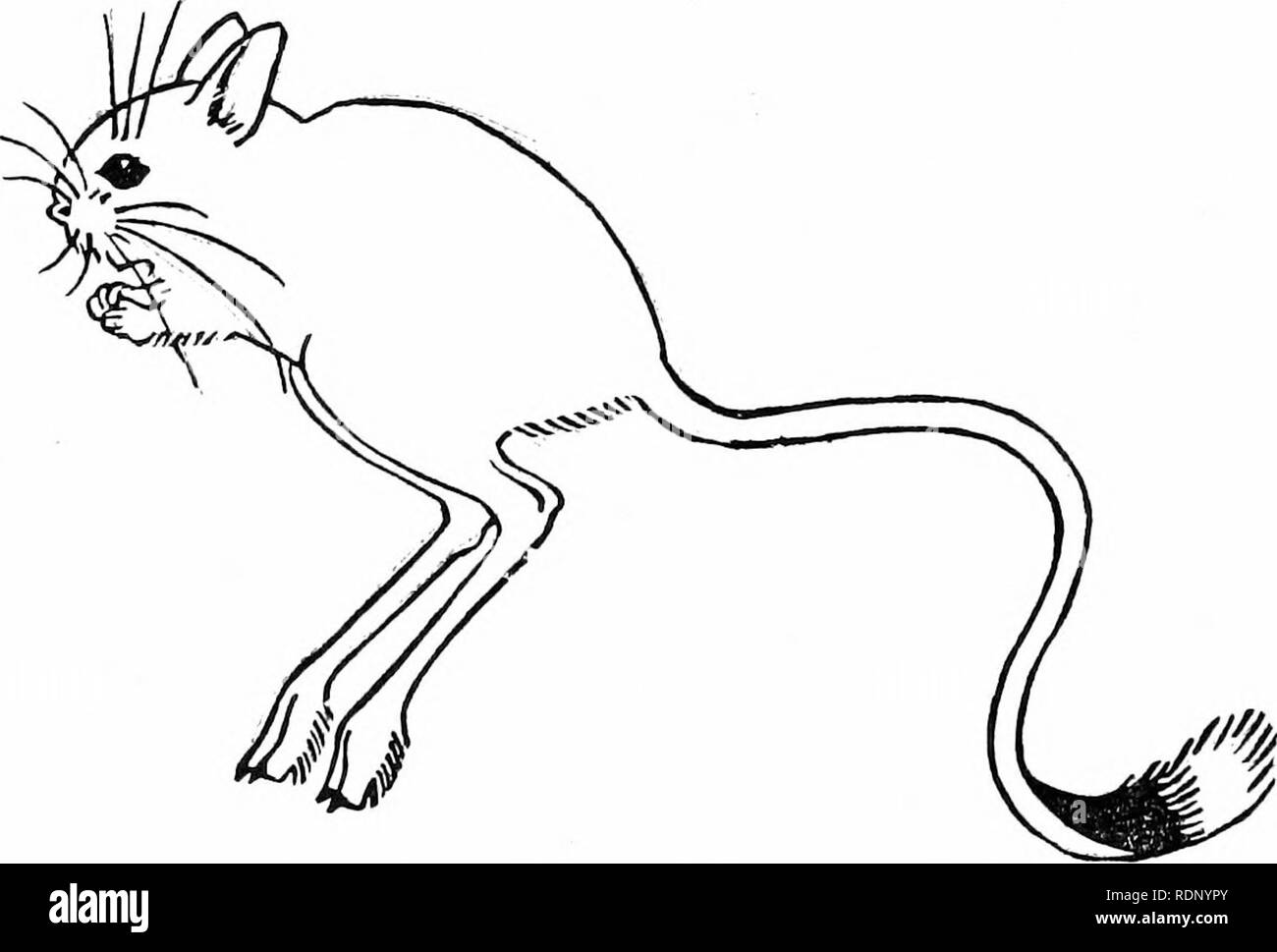 . Fur and feather in North China. Hunting; Natural history. 66 EATS AND MICE. Before discussing the jerboas, a small jumping mouse must be men- tioned. It is called Zupus firtcJinanua vicinti^, and occurs in South- western Kansu, but so far none have been recorded elsewere in North China. There are three other species found in Szeehuan.. The Ordos Jerboa (Di-pus sotverbyi). The most striking jerboa is the Ordos jerboa (Dipus sowerbyi), which was discovered by me in 1908 in the Ordos Desert. This animal is about five inches long in the body, and has very long hind legs, very short front legs an Stock Photohttps://www.alamy.com/image-license-details/?v=1https://www.alamy.com/fur-and-feather-in-north-china-hunting-natural-history-66-eats-and-mice-before-discussing-the-jerboas-a-small-jumping-mouse-must-be-men-tioned-it-is-called-zupus-firtcjinanua-vicinti-and-occurs-in-south-western-kansu-but-so-far-none-have-been-recorded-elsewere-in-north-china-there-are-three-other-species-found-in-szeehuan-the-ordos-jerboa-di-pus-sotverbyi-the-most-striking-jerboa-is-the-ordos-jerboa-dipus-sowerbyi-which-was-discovered-by-me-in-1908-in-the-ordos-desert-this-animal-is-about-five-inches-long-in-the-body-and-has-very-long-hind-legs-very-short-front-legs-an-image232208115.html
. Fur and feather in North China. Hunting; Natural history. 66 EATS AND MICE. Before discussing the jerboas, a small jumping mouse must be men- tioned. It is called Zupus firtcJinanua vicinti^, and occurs in South- western Kansu, but so far none have been recorded elsewere in North China. There are three other species found in Szeehuan.. The Ordos Jerboa (Di-pus sotverbyi). The most striking jerboa is the Ordos jerboa (Dipus sowerbyi), which was discovered by me in 1908 in the Ordos Desert. This animal is about five inches long in the body, and has very long hind legs, very short front legs an Stock Photohttps://www.alamy.com/image-license-details/?v=1https://www.alamy.com/fur-and-feather-in-north-china-hunting-natural-history-66-eats-and-mice-before-discussing-the-jerboas-a-small-jumping-mouse-must-be-men-tioned-it-is-called-zupus-firtcjinanua-vicinti-and-occurs-in-south-western-kansu-but-so-far-none-have-been-recorded-elsewere-in-north-china-there-are-three-other-species-found-in-szeehuan-the-ordos-jerboa-di-pus-sotverbyi-the-most-striking-jerboa-is-the-ordos-jerboa-dipus-sowerbyi-which-was-discovered-by-me-in-1908-in-the-ordos-desert-this-animal-is-about-five-inches-long-in-the-body-and-has-very-long-hind-legs-very-short-front-legs-an-image232208115.htmlRMRDNYPY–. Fur and feather in North China. Hunting; Natural history. 66 EATS AND MICE. Before discussing the jerboas, a small jumping mouse must be men- tioned. It is called Zupus firtcJinanua vicinti^, and occurs in South- western Kansu, but so far none have been recorded elsewere in North China. There are three other species found in Szeehuan.. The Ordos Jerboa (Di-pus sotverbyi). The most striking jerboa is the Ordos jerboa (Dipus sowerbyi), which was discovered by me in 1908 in the Ordos Desert. This animal is about five inches long in the body, and has very long hind legs, very short front legs an
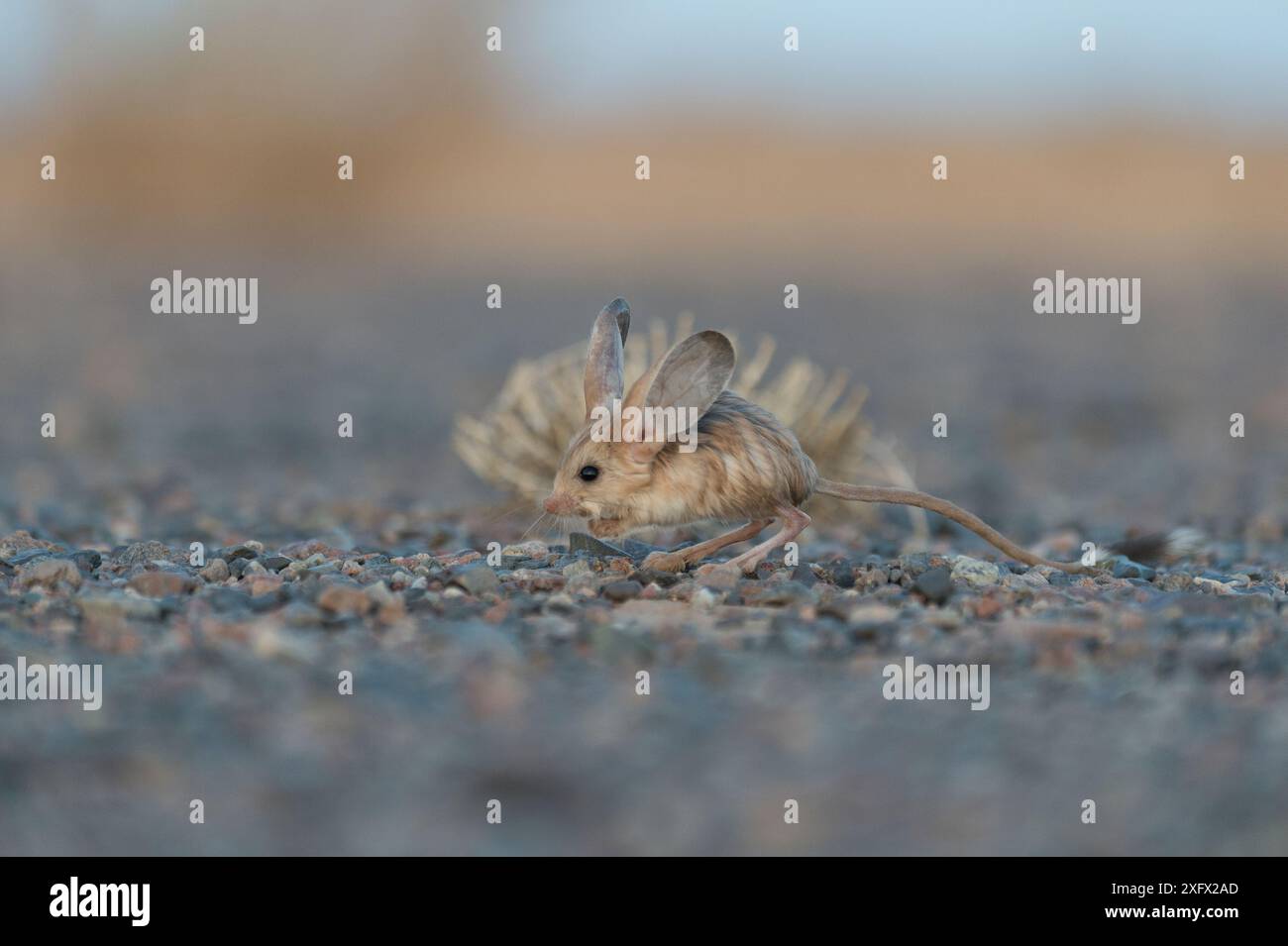 Long-eared jerboa (Euchorentes naso) South Gobi Desert, Mongolia. June. Stock Photohttps://www.alamy.com/image-license-details/?v=1https://www.alamy.com/long-eared-jerboa-euchorentes-naso-south-gobi-desert-mongolia-june-image612155333.html
Long-eared jerboa (Euchorentes naso) South Gobi Desert, Mongolia. June. Stock Photohttps://www.alamy.com/image-license-details/?v=1https://www.alamy.com/long-eared-jerboa-euchorentes-naso-south-gobi-desert-mongolia-june-image612155333.htmlRM2XFX2AD–Long-eared jerboa (Euchorentes naso) South Gobi Desert, Mongolia. June.
 Long-eared jerboa (Euchorentes naso) South Gobi Desert, Mongolia. June. Stock Photohttps://www.alamy.com/image-license-details/?v=1https://www.alamy.com/long-eared-jerboa-euchorentes-naso-south-gobi-desert-mongolia-june-image612155294.html
Long-eared jerboa (Euchorentes naso) South Gobi Desert, Mongolia. June. Stock Photohttps://www.alamy.com/image-license-details/?v=1https://www.alamy.com/long-eared-jerboa-euchorentes-naso-south-gobi-desert-mongolia-june-image612155294.htmlRM2XFX292–Long-eared jerboa (Euchorentes naso) South Gobi Desert, Mongolia. June.
 Long-eared jerboa (Euchorentes naso) South Gobi Desert, Mongolia. June. Did you know that the Long-eared jerboa is the mammal with the largest ears in proportion to its body size? Stock Photohttps://www.alamy.com/image-license-details/?v=1https://www.alamy.com/long-eared-jerboa-euchorentes-naso-south-gobi-desert-mongolia-june-did-you-know-that-the-long-eared-jerboa-is-the-mammal-with-the-largest-ears-in-proportion-to-its-body-size-image612155296.html
Long-eared jerboa (Euchorentes naso) South Gobi Desert, Mongolia. June. Did you know that the Long-eared jerboa is the mammal with the largest ears in proportion to its body size? Stock Photohttps://www.alamy.com/image-license-details/?v=1https://www.alamy.com/long-eared-jerboa-euchorentes-naso-south-gobi-desert-mongolia-june-did-you-know-that-the-long-eared-jerboa-is-the-mammal-with-the-largest-ears-in-proportion-to-its-body-size-image612155296.htmlRM2XFX294–Long-eared jerboa (Euchorentes naso) South Gobi Desert, Mongolia. June. Did you know that the Long-eared jerboa is the mammal with the largest ears in proportion to its body size?
 Long-eared jerboa (Euchorentes naso) South Gobi Desert, Mongolia. June. Did you know that the Long-eared jerboa is the mammal with the largest ears in proportion to its body size? Stock Photohttps://www.alamy.com/image-license-details/?v=1https://www.alamy.com/long-eared-jerboa-euchorentes-naso-south-gobi-desert-mongolia-june-did-you-know-that-the-long-eared-jerboa-is-the-mammal-with-the-largest-ears-in-proportion-to-its-body-size-image612155292.html
Long-eared jerboa (Euchorentes naso) South Gobi Desert, Mongolia. June. Did you know that the Long-eared jerboa is the mammal with the largest ears in proportion to its body size? Stock Photohttps://www.alamy.com/image-license-details/?v=1https://www.alamy.com/long-eared-jerboa-euchorentes-naso-south-gobi-desert-mongolia-june-did-you-know-that-the-long-eared-jerboa-is-the-mammal-with-the-largest-ears-in-proportion-to-its-body-size-image612155292.htmlRM2XFX290–Long-eared jerboa (Euchorentes naso) South Gobi Desert, Mongolia. June. Did you know that the Long-eared jerboa is the mammal with the largest ears in proportion to its body size?
 Long-eared jerboa (Euchorentes naso) South Gobi Desert, Mongolia. June. Did you know that the Long-eared jerboa is the mammal with the largest ears in proportion to its body size? Stock Photohttps://www.alamy.com/image-license-details/?v=1https://www.alamy.com/long-eared-jerboa-euchorentes-naso-south-gobi-desert-mongolia-june-did-you-know-that-the-long-eared-jerboa-is-the-mammal-with-the-largest-ears-in-proportion-to-its-body-size-image612155298.html
Long-eared jerboa (Euchorentes naso) South Gobi Desert, Mongolia. June. Did you know that the Long-eared jerboa is the mammal with the largest ears in proportion to its body size? Stock Photohttps://www.alamy.com/image-license-details/?v=1https://www.alamy.com/long-eared-jerboa-euchorentes-naso-south-gobi-desert-mongolia-june-did-you-know-that-the-long-eared-jerboa-is-the-mammal-with-the-largest-ears-in-proportion-to-its-body-size-image612155298.htmlRM2XFX296–Long-eared jerboa (Euchorentes naso) South Gobi Desert, Mongolia. June. Did you know that the Long-eared jerboa is the mammal with the largest ears in proportion to its body size?
 Long-eared jerboa (Euchoreutes naso) South Gobi Desert, Mongolia. June. Did you know that the Long-eared jerboa is the mammal with the largest ears in proportion to its body size? Stock Photohttps://www.alamy.com/image-license-details/?v=1https://www.alamy.com/long-eared-jerboa-euchoreutes-naso-south-gobi-desert-mongolia-june-did-you-know-that-the-long-eared-jerboa-is-the-mammal-with-the-largest-ears-in-proportion-to-its-body-size-image612155290.html
Long-eared jerboa (Euchoreutes naso) South Gobi Desert, Mongolia. June. Did you know that the Long-eared jerboa is the mammal with the largest ears in proportion to its body size? Stock Photohttps://www.alamy.com/image-license-details/?v=1https://www.alamy.com/long-eared-jerboa-euchoreutes-naso-south-gobi-desert-mongolia-june-did-you-know-that-the-long-eared-jerboa-is-the-mammal-with-the-largest-ears-in-proportion-to-its-body-size-image612155290.htmlRM2XFX28X–Long-eared jerboa (Euchoreutes naso) South Gobi Desert, Mongolia. June. Did you know that the Long-eared jerboa is the mammal with the largest ears in proportion to its body size?
